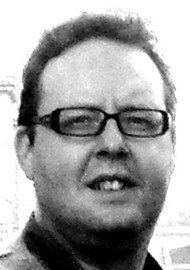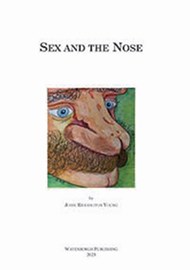For regular attentive readers of our little magazine, JRY will need no introduction. The word ‘polymath’ barely does him justice: a Colonel in the Medical Corps with an MPhil in poetry and apparently one of the “50 coolest people in Devon” against some stiff competition.
For many years, the author gave a lecture on ‘Sex and the nose’ for the London Rhinoplasty Course which attained near legendary status, and this beautifully produced and illustrated volume is clearly a labour of love, representing decades of thought and erudition in this peculiarly neglected field. After all, most rhinologists of my acquaintance think themselves competent in both areas, and I am deeply flattered the editorial team clearly thought I was sufficiently proficient to provide an expert assessment.
The breadth of the scholarship involved can only be hinted at in a brief review, but if you have any curiosity about male infibulation, the origins of fullocking, the etymology of smegma, Little Jimmy Scott’s falsetto or Aunt Mabel’s thoughts on munitions workers’ menses then you need look no further. The prose style is delightfully discursive, dry scientific literature frequently interspersed with personal anecdotes and irreverent insights.
We begin in the classical world with the thoughts of Aristotle and Celsus, and move rapidly on to physiognomy and its pitfalls, the anthropology of gestures involving the nose and controversy over the presence of mucosal erectile tissue. After a brief discourse on Japanese Shunga art, we turn to Kallman’s syndrome and then Freud’s crackpot friend, Wilhelm Fliess, and his appalling mismanagement of Emma Eckstein. We also learn of the author’s mother’s thoughts on onanism in a Blackpool waxwork museum and St Clair Thompson’s somewhat controversial views on the aetiological role of self-pleasure in post-nasal drip.
The hormonal effects on nasal physiology during pregnancy, menstruation, sexual excess and puberty are discussed at length and we learn that the author’s mess bar bill as a House Officer was settled by his consultant in 1968. In a book brimful of thought-provoking facts, this certainly made me pause.
The second half of the monograph is dominated by an even-handed treatment of the controversies over the vomeronasal organ and its potential role in the human pheromonal response. Here, the author’s scholarship and clarity of thought come into their own, with a lucid and well-referenced account of a potentially highly confusing area. I remember well the brief flurry of concern that septal surgery could impair pheromonal perception with potentially catastrophic effects on sexual performance. Subsequently, a North Devon audit demonstrated significant improvement in sexual prowess post septoplasty, but I remain unsure whether to include this in my patient information pamphlet. They do audit differently in the West Country.
This lavishly produced volume would pass as a coffee table book but, given its contents, may provoke some extreme reactions. My current long-suffering registrar absent-mindedly picked it up and leafed through it as I was holding forth at length at my desk: “Good Lord,” she interjected, “this is completely unhinged!”
It is indeed, and gloriously so.





